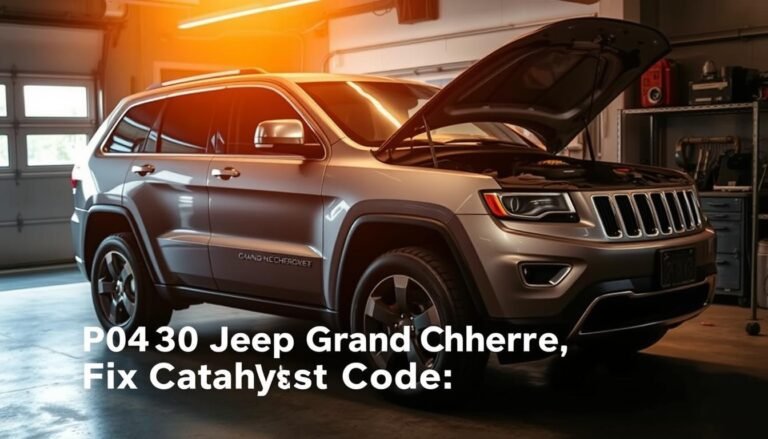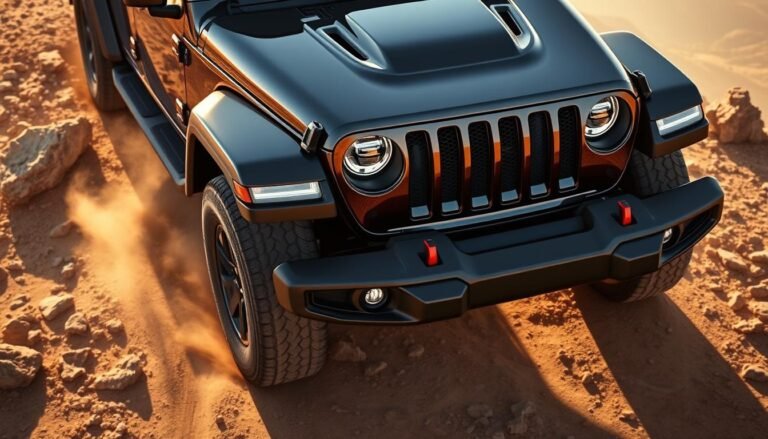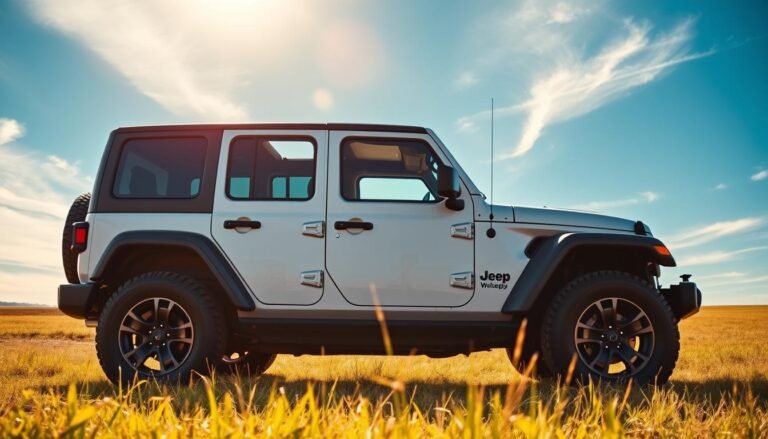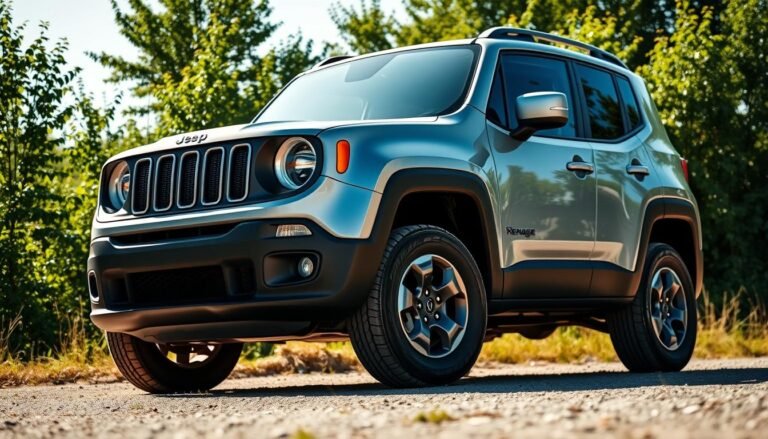Jeep Compass vs Cherokee: SUV Showdown Comparison
Choosing between the Jeep Compass vs Cherokee requires understanding their differences.
Each model showcases the best of Jeep, mixing off-road prowess with modern comforts. We’ll explore their performance, design, and costs in our comparison.
You’ll know which SUV is right for your lifestyle and wallet by the end. We’ll cover everything from size and engine choices to cabin space and tech.
Every part is tailored to give you deep insights. So, whether you plan to explore the wild or the city, this showdown will help pinpoint your ideal Jeep.
Introduction To Jeep Crossovers
The Jeep brand is well-known in the SUV world. It’s famous for its strong crossover vehicles.
These vehicles, like the Compass and Cherokee, are perfect for daily use and off-road adventures. They show off Jeep’s great design and off-road skills.
Jeep crossovers are all about adventure. They’re made for city driving and the great outdoors. Whether you’re going to work or exploring nature, Jeep crossovers are a great choice.
Exploring Jeep’s range, you’ll see how these crossovers fit your life. They’re great for adventure lovers who don’t want to give up comfort or convenience.
Key Differences between Jeep Compass and Jeep Cherokee
Comparing the Jeep Compass and Cherokee shows their unique features. Each SUV serves different needs for its drivers.
The Cherokee is bigger, offering more space inside. It also has a turbocharged engine option, making it powerful.
Size and Dimensions
The Cherokee is more spacious than the Compass. It is 183 inches long, 10 inches longer than the Compass.
This means the Cherokee has more room for cargo and passengers, great for families.
Engine Options and Performance
Both SUVs have four-cylinder engines. But the Cherokee includes a turbocharged version.
This gives it more power and speed, perfect for those who love adventure. The turbo engine also means better towing capabilities.
Jeep Compass vs Cherokee: An Exercise in Similarity
Looking at the Jeep Compass and Cherokee, you’ll see they share many design features. Both flaunt the iconic Jeep seven-slot grille, showing off their tough heritage.
They also have LED lights that add a modern touch, making both models appealing for fans. The interiors of the Jeep Compass and Cherokee are designed with you in mind.
They come with easy-to-use controls and high-quality materials. These features make every ride, whether on a smooth road or rough terrain, feel special and well-planned.
These similarities aren’t just by chance. They show Jeep’s focus on a design that’s both rugged and elegant. The Jeep Compass and Cherokee cater to the adventurous at heart.
They offer choices that suit many different drivers. Check them out and pick the one that best suits your adventurous lifestyle.
Interior Space Comparison: Compass vs Cherokee
The inside of an SUV greatly affects how you enjoy your ride. Looking at the Jeep Compass versus Cherokee, both models stand out.
They provide comfort for passengers and space for your stuff differently. Getting to know these can help you choose what suits you best.
Passenger Comfort and Cargo Volume
How comfortable you are in your SUV is super important. The Jeep Compass might be a bit smaller but doesn’t skimp on space above your head or for your gear, offering 27.2 cubic feet for your things.
The Jeep Cherokee, although having a bit less space for luggage at 25.8 cubic feet, makes up for it. It does this with nicer features and luxury touches in the higher trims.
Technology Features
Both the Compass and Cherokee don’t hold back on tech. The Compass comes with a 7-inch touchscreen that makes connecting your phone easy.
The Cherokee, while starting with a similar screen, steps it up in the pricier versions. It offers bigger screens and cooler tech aimed at making driving fun and simpler.
| Feature | Jeep Compass | Jeep Cherokee |
|---|---|---|
| Passenger Capacity | 5 | 5 |
| Cargo Volume | 27.2 cubic feet | 25.8 cubic feet |
| Standard Touchscreen Size | 7 inches | 7 inches |
| Smartphone Integration | Apple CarPlay and Android Auto | Apple CarPlay and Android Auto |

Exterior Design: Jeep Compass vs Cherokee
The exterior design is key in showing the unique look of the Jeep Compass and Cherokee.
This jeep compass vs cherokee comparison shows how each car respects Jeep’s past but also stands out on its own. They do this through different style features.
The Jeep Compass features a fresh take on classic tough looks, marked by a striking grille and sharp headlamp design.
It has balanced sizes and a smooth body shape. This gives it a lively look that’s fun to drive. In contrast, the Jeep Cherokee looks bolder and more powerful.
It’s bigger and sits higher off the ground, ready for adventure. It has the famous seven-slot grille and optional LED lights. These features make it look strong.
The differences in size show what each car is best for. The Compass is great for city driving, offering both style and fuel efficiency.
The Cherokee is for those who love exploring outside the city. Here’s a closer look at how they compare.
| Feature | Jeep Compass | Jeep Cherokee |
|---|---|---|
| Overall Length | 173 inches | 182 inches |
| Wheelbase | 103.6 inches | 106.0 inches |
| Ground Clearance | 7.8 inches | 8.7 inches |
| Headlight Type | Halogen, optional LED | Standard LED |
| Rugged Styling Features | Sleek contours, defined lines | Bold contours, aggressive stance |
To sum up, both the Jeep Compass and Cherokee have tough styles but they cater to different tastes.
Your choice will depend on if you prefer city elegance or are eager for off-road adventures.
Performance Overview: Engine and Powertrain
Choosing between the jeep compass and cherokee involves looking at performance closely. You need to know the engine details and if they fit how you drive.
We’ll look at things like fuel efficiency and towing power, which are key to a good decision.
Fuel Efficiency
The jeep compass uses a turbocharged 2.0L inline-4 engine, offering strong fuel economy. It gets 24 mpg in the city and 32 mpg on the highway.
The Cherokee, however, manages 21 mpg in the city and 29 mpg on the highway. This makes the compass a better pick for saving on gas.
Towing Capacity
The Cherokee stands out for towing, with a capacity of up to 4,000 lbs. This makes it great for those who need to pull trailers or big loads.
The compass, though, can tow up to 2,000 lbs. It’s less suited for heavy hauling.
| Feature | Jeep Compass | Jeep Cherokee |
|---|---|---|
| Engine | Turbocharged 2.0L Inline-4 | Variety of Engine Options |
| Fuel Efficiency (City/Highway) | 24 / 32 mpg | 21 / 29 mpg |
| Towing Capacity | 2,000 lbs | 4,000 lbs |

Pricing and Value: Compass vs Cherokee
When thinking about your next SUV, the price is a key factor. The 2025 Jeep Compass starts at an attractive $25,900.
The 2023 Jeep Cherokee, no longer made, had a higher start at $37,695. This big price gap greatly impacts which model gives you more for your money.
It’s important to look beyond the purchase price. Consider the full cost, which includes how much it depreciates, upkeep expenses, and its value if you sell it.
The Jeep Compass’s lower starting price may offer financial benefits for those planning to keep their SUV for a while.
In choosing between the Jeep Compass and Cherokee, think beyond their initial prices. Look at how well each vehicle maintains its value as time goes on.
Knowing these points will help you make a smart choice for your next SUV.
Off-Road Capability of Jeep Compass and Cherokee
Both the Jeep Compass and Cherokee shine in off-road capability, especially in their Trailhawk versions. These models are built tougher for off-road adventures.
They have special features for off-road driving, making it exciting and safe to explore different terrains.
Trailhawk Variants Comparison
The Jeep Compass and Cherokee Trailhawk models differ in off-road features. Each one has unique benefits, fitting various adventure styles.
| Feature | Jeep Compass Trailhawk | Jeep Cherokee Trailhawk |
|---|---|---|
| Ground Clearance | 8.6 inches | 8.7 inches |
| Approach Angle | 30.3 degrees | 29.9 degrees |
| Departure Angle | 33.6 degrees | 32.5 degrees |
| Engine Option | 2.4L I4 | 3.2L V6 |
| Towing Capacity | 2,000 lbs | 4,500 lbs |
The Compass has better approach angles, great for steep hills. The Cherokee has a stronger engine, offering more power for tough terrain.
Both are great for off-roading, so you can pick the one that suits your outdoor adventures best.
Comfort and Ride Quality
When looking at the jeep compass vs cherokee, how comfortable they are matters a lot. Both offer enjoyable rides but meet different needs.
The jeep compass is great for everyday use and weekend trips. But, the jeep cherokee gives a touch of luxury. It has fancy features that make every ride feel special.
Interior Features and Upscale Options
Inside, both jeeps bring a lot to the table:
- The cherokee shines with its top-notch materials and finishes.
- The jeep compass has an easy-to-use infotainment system. But, the cherokee goes a step further with advanced tech for better connectivity.
- For extra coziness, the cherokee offers heated and ventilated seats.
- It also has multi-zone climate control, letting everyone set their own comfort levels.
Both the compass and cherokee stand out for how comfortable they are. But, diving into jeep compass vs cherokee shows the cherokee’s luxury extras.
This makes it a top pick for those wanting more elegance.
Safety Features in Jeep Compass and Cherokee
When you compare the jeep compass vs cherokee, it’s key to look at their safety features. Each model has a lot to offer to protect you and your passengers.
The Jeep Compass is equipped with cool tech like adaptive cruise control and lane departure warnings for extra safety on the road.
The Jeep Cherokee steps it up with features like blind-spot monitoring. This helps you be more aware of your surroundings and safer on busy streets.
Both vehicles include advanced technology to enhance both driving performance and safety for everyone inside.
Choosing which SUV is right for you means looking closely at their safety features. Both the Compass and Cherokee are designed with your safety in mind, featuring the latest in safety tech.

Depreciation: Jeep Compass vs Cherokee
Learning how much cars lose value is key when investing. When looking at the Jeep Compass vs Cherokee, it’s crucial to see their different rates of losing value.
The Compass is usually cheaper, so it might lose value slower. The Cherokee, with its higher initial cost, has become a top pick for many.
This fame helps it keep its value better. When thinking about the future, most people consider how much the car will be worth.
These facts show that the Compass and Cherokee affect your wallet differently over time.
Knowing about these trends helps you decide better when considering resale values and overall costs. So, choosing the model that fits your financial plans is wise.
Final Verdict: Which SUV is Right For You?
Choosing between the Jeep Compass and Jeep Cherokee depends on what’s important to you.
If your budget, desired size, or specific features matter, each Jeep has something different to offer. The Jeep Compass is great for city drivers because of its smaller size.
It’s easy to park and move around. On the other hand, the Jeep Cherokee offers more power and is built for off-road adventures.
Both the Compass and Cherokee come with the latest tech and safety features. Yet, they cater to different needs.
The Compass is more affordable and efficient, making it a good choice for those watching their budget.
The Cherokee, however, gives you more room inside and better performance options. What’s most important to you will help decide.
If you like something small and handy, the Jeep Compass might be right. But if you need more power and space, the Jeep Cherokee could be the better choice.
Think about what you need from your SUV before making a decision.

Conclusion
In our SUV comparison, we see the Jeep Compass and Cherokee are different. The Compass is great for those who look for affordability and fuel savings.
It’s perfect for everyday travel and for those keeping an eye on their budget. Its small size and easy driving make it great for city life.
The Cherokee, however, is about luxury and strong performance. It’s for people who like extra features, cutting-edge technology, and off-roading.
It’s bigger and has more powerful engines, offering more choices for travel and adventure. Choosing depends on what you need and how you live.
Knowing what each model offers helps you pick the right Jeep for you, with confidence. Whether that’s the Compass or Cherokee, it’s all about what fits your life.
FAQs
Q: What are the main differences in size between the Jeep Compass and Jeep Cherokee?
A: The Jeep Cherokee is the bigger of the two, being 183 inches long. The Compass is shorter at 173 inches.
Q: Which model offers better engine performance options?
A: The Cherokee has a more robust turbocharged engine choice. However, both use four-cylinder engines.
Q: How does the interior space compare between the two models?
A: The Compass beats the Cherokee in cargo space with 27.2 cubic feet. But, the Cherokee, with 25.8 cubic feet, offers luxury features in its higher trims.
Q: What are the key performance specifications for the Compass and Cherokee?
A: The Compass sports a turbo 2.0L engine with 24/32 mpg. The Cherokee is less fuel-efficient at 21/29 mpg but can tow up to 4,000 lbs.
Q: How do the pricing structures differ between the two SUVs?
A: The 2025 Jeep Compass starts at about ,900. The 2023 Jeep Cherokee was pricier at ,695 before it stopped being made.
Q: What off-road features are available in both models?
A: Both models feature Trailhawk versions for off-roading, with the Cherokee’s stronger engine adding to its capability.
Q: What safety technologies can I expect in the Jeep Compass and Cherokee?
A: Both SUVs are fitted with modern safety technologies. The Compass includes adaptive cruise control and lane departure warnings. The Cherokee also offers blind-spot monitoring.
Q: How do depreciation rates compare for the Compass and Cherokee?
A: The Compass might lose value differently because it’s cheaper at the start. This could impact its future sale price unlike the Cherokee which started at a higher price.







